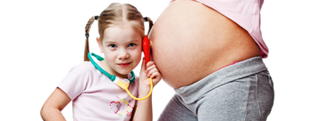Children are little bacteria magnets. They pick up every possible germ in their path. The same is true for allergens since kids have never met an allergen they didn’t like. Whether it’s food, the environment, or pets, the list goes on and on. Parents must be on guard all the time. Common allergies in children: identifying triggers and managing symptoms.
What Are the Common Allergies in Children?
Allergies are our body mistakenly defending itself. When someone encounters an allergen, the body’s immune system attacks it with antibodies producing chemicals like histamines to fight off the “invader”. Consequently, the person has a reaction, namely, an allergic reaction.
Environmental Allergens
Environmental allergens include triggers like tree pollen, dust, grasses, and weeds.
This has come to be known as hay fever with seasonal symptoms like a runny nose, itchy eyes, and nasal congestion.
Food Allergens
Common food allergens include eggs, peanuts, soy, wheat, milk, fish, and shellfish, however, individuals can be allergic to almost any food. It is believed as many as six million children have food allergies in the US.
These triggers manifest as rashes, hives, and even life-threatening anaphylaxis where the child can go into shock.
Animal and Pet Allergens
Animal and pet allergens can include pet dander, feathers, urine, cockroaches, and mice.
Coughing, difficulty breathing, a rash, runny nose can be symptoms of this allergy.
Skin Allergens
Skin allergens can include laundry detergent, fabric softeners, soap, and synthetic materials.
Hives, eczema, and contact dermatitis are symptoms of skin allergies.
Additional Allergens
Other possible irritants that can bring on an allergy include the following:
- Smoke
- Mold
- Dust mites
- Cigarette smoke
- Perfume
- A car exhaust
- Insect bites and bee stings
Get to Know Your Child’s Triggers
If your child has a reaction and develops an allergy, be aware of everything they have been exposed to recently. Has there been a seasonal change? Have they been playing outside a lot? Have they been spending a lot of time with pets? What have they recently eaten?
If you can’t determine the allergen causing the reaction, see a pediatrician for a series of allergy tests. Once you know the triggers, you can begin to manage your child’s symptoms and/or decide on the best treatment(s).
Treatment for Allergies in Children
There are really only three ways to treat allergies:
- Avoidance
- Allergy shots (immunotherapy)
- Medicines
Guidelines for Parents
As a parent, you can help to minimize your child’s exposure to certain triggers.
- Stay indoors during high pollen level days or windy days.
- Modify your child’s diet.
- Use allergen-free products in your home.
- Keep all needed allergy medicines at your disposal like antihistamines, decongestants, nasal sprays.
- Keep up to date on allergy shots if needed.
- Inform all your child’s caregivers/school of their allergies and emergency protocol as directed by your pediatrician (if needed).
Contact Westside Pediatrics at (585) 247-5400 to schedule a pediatric allergy testing appointment in Rochester or if your child’s allergies seem to get worse.




